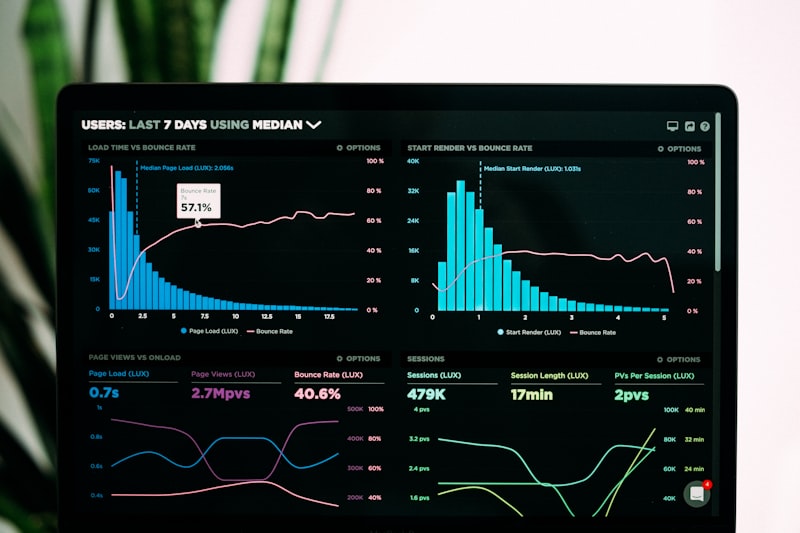Brand Tracking and Research-Backed Content
The Complete Guide to Measuring Brand Health and Publishing Data-Driven Content
The Power of Brand Intelligence
In today's competitive digital landscape, brand tracking and research-backed content have become essential pillars of successful marketing strategies. Brand tracking allows businesses to measure awareness, perception, and loyalty over time, while research-backed content establishes authority and builds trust with your audience.
Companies that implement systematic brand tracking see 23% higher customer retention rates, while content supported by research generates 67% more leads than traditional marketing content. Together, these strategies create a powerful feedback loop that drives sustainable growth.

"Brands that consistently track their performance and publish research-backed content experience 3.5x higher brand recall and 2.8x more engagement than competitors relying on traditional marketing approaches."
The Evolution of Brand Measurement
Early Brand Tracking Methods
The concept of brand tracking dates back to the 1920s when companies first began conducting rudimentary market surveys. These early methods relied on:
- Door-to-door interviews and paper surveys
- Focus groups with limited sample sizes
- Manual data collection and analysis
- Basic awareness and recall measurements
- Localized market studies
These methods provided foundational insights but lacked the speed and accuracy needed for real-time decision making.
Modern Brand Intelligence
Today's brand tracking leverages advanced technologies and methodologies:
- Digital surveys: Reaching global audiences instantly
- Social listening tools: Analyzing brand mentions in real-time
- Web analytics: Tracking digital brand interactions
- AI-powered sentiment analysis: Measuring emotional responses
- Competitive benchmarking: Comparing against industry standards
This evolution has transformed brand tracking from a periodic exercise to a continuous stream of actionable insights.
The Brand Tracking Framework
Brand Awareness
Measuring how well consumers recognize and recall your brand:
- Unaided awareness: Spontaneous brand recall
- Aided awareness: Recognition when prompted
- Top-of-mind awareness: First brand mentioned
- Brand visibility: Digital and physical presence
- Share of voice: Compared to competitors
Top brands maintain 70-90% aided awareness in their categories, while unaided awareness typically ranges from 20-50% for market leaders.
Brand Perception
Understanding how consumers view your brand attributes:
- Brand attributes: Quality, value, reliability
- Brand personality: Traits and characteristics
- Emotional connection: How consumers feel
- Brand differentiation: Unique value proposition
- Reputation metrics: Trust and credibility
Brands with strong positive perception enjoy 3-5x higher customer lifetime value and 50% greater price tolerance.
Brand Loyalty
Measuring customer commitment and retention:
- Purchase intent: Likelihood to buy again
- Net Promoter Score (NPS): Willingness to recommend
- Customer satisfaction: CSAT scores
- Retention rates: Repeat purchase behavior
- Brand advocacy: Organic promotion
Increasing customer retention by just 5% can increase profits by 25-95%, making loyalty a key brand health indicator.
Creating Research-Backed Content
Research Methodology
Effective research-backed content begins with solid methodology:
- Original surveys: Targeted audience questions
- Data analysis: Statistical significance testing
- Competitive analysis: Industry benchmarking
- Case studies: Real-world examples
- Expert interviews: Authority perspectives
- Trend analysis: Longitudinal data
Content Formats
Research findings can be presented in various engaging formats:
- Industry reports: Comprehensive data analysis
- Infographics: Visual data representation
- Whitepapers: In-depth exploration
- Data-driven blog posts: Timely insights
- Interactive tools: Calculators and assessments
- Webinars: Live data presentations
Implementation Guide
Setting Up Brand Tracking
A step-by-step approach to implementing brand tracking:
- Define objectives: What you need to measure
- Identify KPIs: Key performance indicators
- Select tools: Survey platforms, analytics
- Establish baseline: Current brand metrics
- Create survey: Questionnaire design
- Determine frequency: Quarterly or biannual
- Analyze results: Data interpretation
- Take action: Strategy adjustments

Publishing Research Content
Best practices for creating impactful research content:
- Identify knowledge gaps: Unexplored topics
- Conduct original research: Surveys, data analysis
- Validate findings: Statistical significance
- Create narrative: Storytelling with data
- Design visually: Charts, graphs, infographics
- Promote strategically: Targeted distribution
- Update regularly: Annual or biannual updates
- Measure impact: Engagement metrics

Tools and Technologies
Essential tools for brand tracking and research content:
- Survey tools: Qualtrics, SurveyMonkey, Typeform
- Analytics platforms: Google Analytics, Brandwatch
- Data visualization: Tableau, Power BI, Canva
- Social listening: Mention, Hootsuite Insights
- SEO research: SEMrush, Ahrefs, Moz
- Content distribution: Outbrain, Taboola, LinkedIn
Building a Data-Driven Brand Strategy
Brand tracking and research-backed content form a powerful synergy that can elevate your marketing strategy from guesswork to precision. By systematically measuring brand health and supporting your content with credible data, you create a foundation for sustainable growth and competitive advantage.
The most successful brands today use these approaches not as occasional projects but as continuous processes that inform every marketing decision. This commitment to data-driven brand management results in stronger customer relationships, more effective messaging, and ultimately, better business outcomes.
As you implement these strategies, remember that consistency is key. Regular brand tracking allows you to spot trends early, while ongoing research content establishes your brand as an industry authority. Together, they create a virtuous cycle that drives awareness, engagement, and loyalty over time.
"Brands that combine systematic tracking with research content see 45% faster growth than competitors, with 60% higher customer retention rates and 3x more media coverage. This powerful combination turns data into actionable insights and insights into competitive advantage."





0 Comments